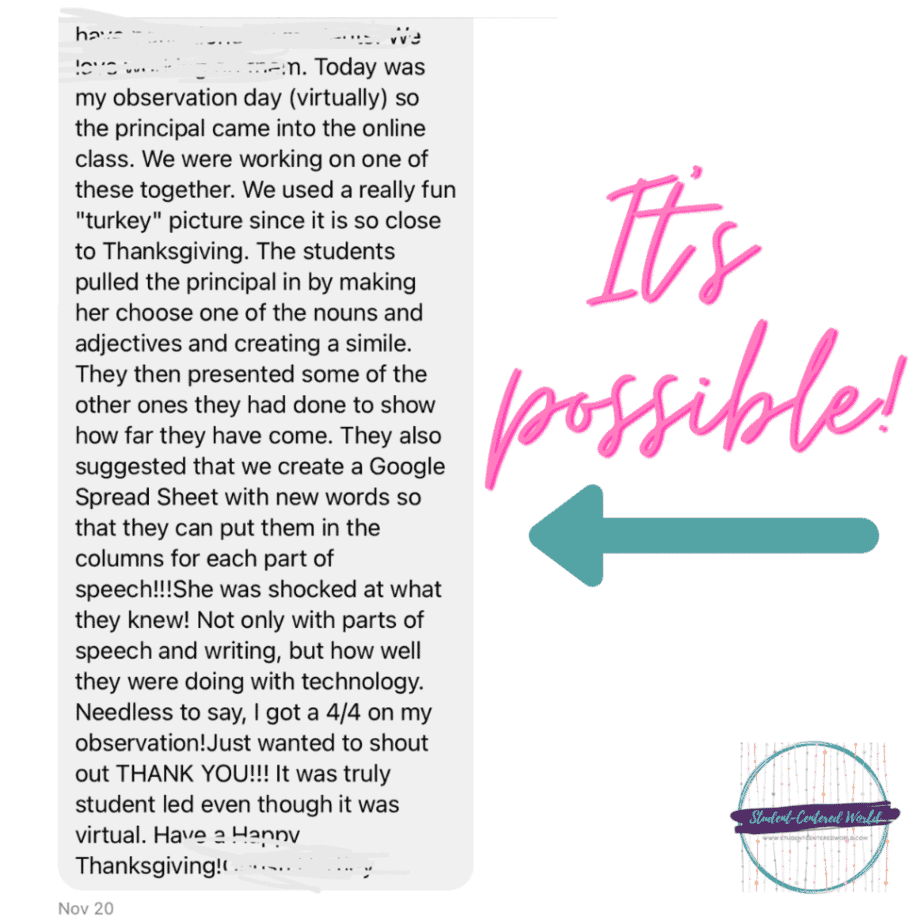T-TESS Observation Success in the 21st-Century Classroom
When teachers are trying to ace their T-TESS observation in the classroom, they often face issues when it comes to student engagement. Luckily, there are easy ways for teachers to increase that engagement to get the most out of their Texas teacher evaluation.
The T-TESS teacher observation system is a comprehensive evaluation tool that focuses on measuring the effectiveness of teachers in Texas. T-TESS training is provided to school administrators to ensure they are equipped with the necessary skills to evaluate teachers based on the Texas Teacher Standards. The system is designed to encourage growth and development, rather than simply identifying areas of weakness.
Through the use of student learning objectives and areas of strength, teachers can set goals and work towards improving their teaching practices.
The T-TESS system of support includes both formal and informal observations, which allows administrators to gain a well-rounded understanding of a teacher’s instructional practices. The end-of-year conference is a crucial component of the T-TESS system, as it provides an opportunity for teachers and administrators to reflect on their progress and set goals for the upcoming year.
In addition to evaluating instructional practices that hone in on the holistic nature of teaching, T-TESS also values community engagement and a growth mindset, as these factors are essential to creating a positive and supportive learning environment. Professional learning opportunities are also an important component of the T-TESS recommended system, as they provide new teachers and veteran teachers alike with the tools they need to continuously improve their teaching practices.
Elements of the T TESS Observation Model
T-TESS seeks to capture all of the overall elements of teaching and education, in which a constant feedback loop exists between teachers and their pupils and in turn, assesses teachers’ effectiveness. This support system necessitates ongoing dialogue and constant attention to how students respond to their teacher’s instructional methods. For those reasons, each of the T TESS observation domains focuses on teachers and pupils rather than dividing them into separate elements as many other observation models do.
T-TESS is a method for developing good habits of continuous improvement and professional growth. This truly happens since decisions on professional development and the utilization of evidence-based feedback toward teachers are always at the forefront of how the decision-making process is executed.
The Components of the T TESS Observation Model
There are three main observable domains of the T-TESS Rubric. They include:
- Goal-setting and professional development plan
- The evaluation cycle
- Student growth measure
Goal-Setting and Professional Development Plan
Even before the first observation is conducted, teachers should already have a clear understanding of their goals on how to improve on specific elements with a consistent focus. These are based on professional practices and key priorities they identified on the student’s academic progress, teacher attitudes toward teaching, as well as classroom instructional practices.
They then set out their professional development plan with specific objectives which are reviewed, revised, and set again every time they have an observation, which in turn directs their professional development decisions and continued goal setting.
Evaluation Cycle
Based on the professional development plan teachers have established for themselves, T-TESS seeks to identify the most significant issues in their classroom performance and within the teacher’s instructional practices so that they can be addressed through more effective planning and instructional strategies.
The teacher evaluation system is composed of four steps:
- Actions are taken on problems identified during the first three observation cycles
- Re-examination of the teacher’s professional development plan
- Refinement of this plan to address previously identified areas of concern that were not addressed earlier due to insufficient evidence or lack of importance
- Setting new goals and objectives for future T TESS observations
Student Growth Measures
Measures of student performance are very important to evaluate how successful this improvement plan was. For T-TESS, three types of measures are the most significant:
- Quantifiable changes in achievement rates on district benchmark tests
- Changes in specific subcategories on the state’s yearly progress report
- Students’ self-assessment of their performance
Every time teachers receive a new set of observation results, they can compare them to the ones from previous years and across different grade levels. This makes the data collected more meaningful because it shows how much progress teachers have made in a specific category or subcategory based on students’ test scores and other evidence.
Individual Contributions to the T TESS Observation Model
The individual components of this observation model worked together to bring about a system that allows teachers and their principals to work hand-in-hand toward achieving a common goal – student achievement. It also empowers teachers by allowing them to make decisions on how they will improve themselves in their professional development plan.
The T TESS observation and evaluation cycle provides clear steps for what needs to be done, when it needs to be done, and why it has to be done and is also dependent on timely feedback from the observation team.
Student growth measures provide a key indicator of teacher success so that appropriate changes can be made if they have not followed best practices for the learning environment. The T-TESS allows teachers to form a collaborative relationship with their principals and together, they can determine student progress as well as the quality of instruction being carried out in the classroom. It is precisely this element that has contributed so much to the successful implementation of student growth models in many US states now.
Finding Help with Your T TESS Observation
If your school follows T-TESS for observations, you are in luck. Helping teachers rock in the classroom is my forte.

This article was originally published on April 16, 2021





